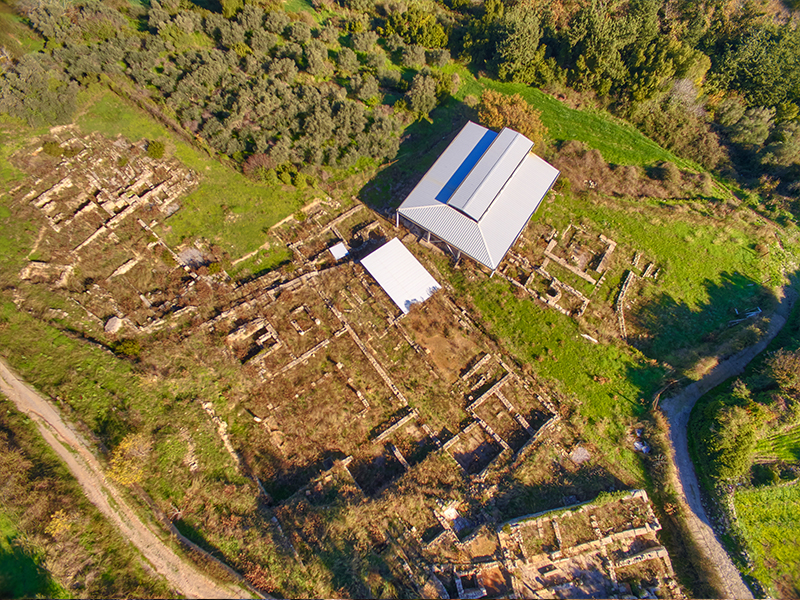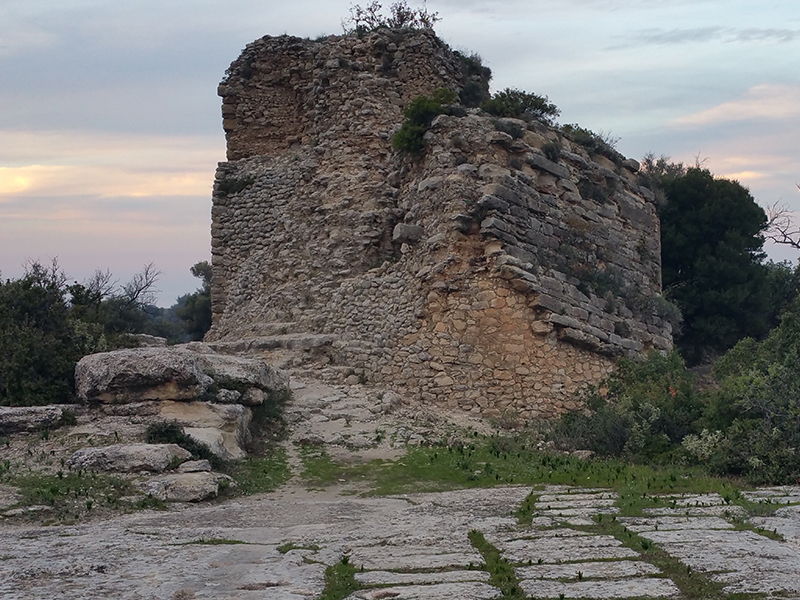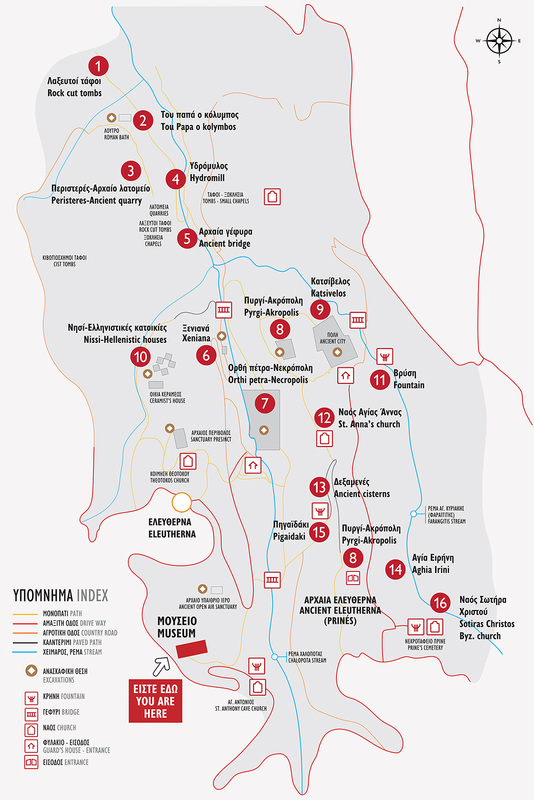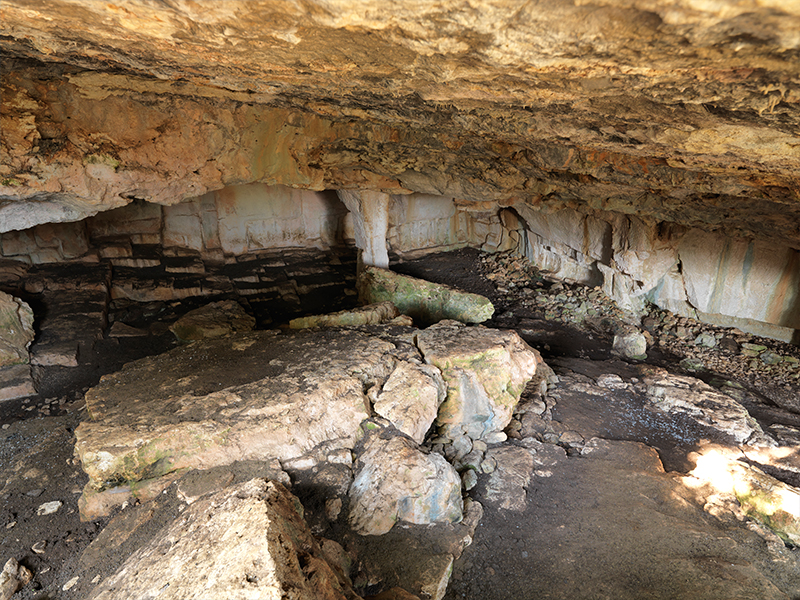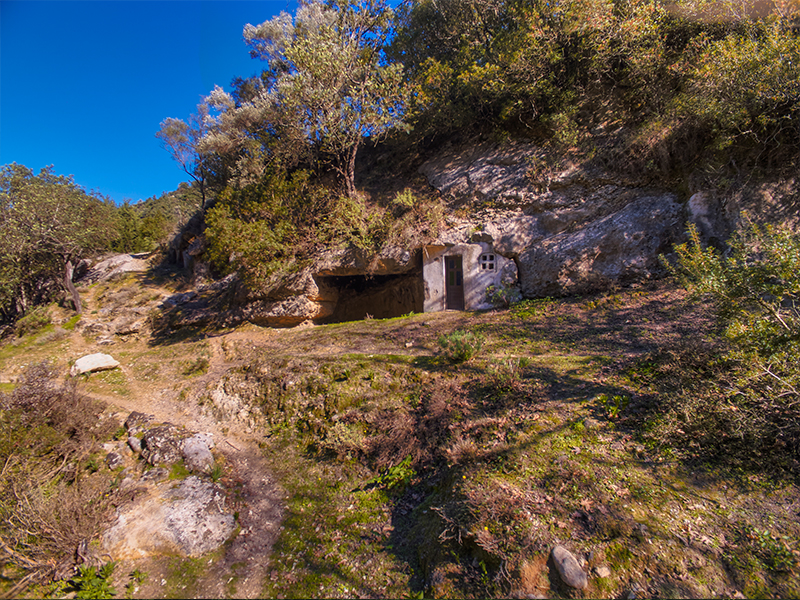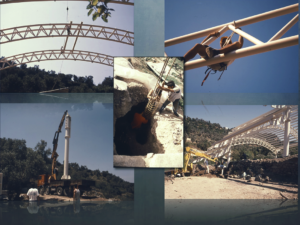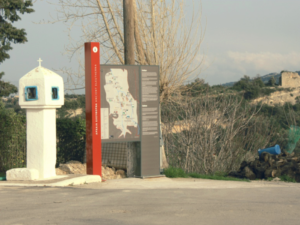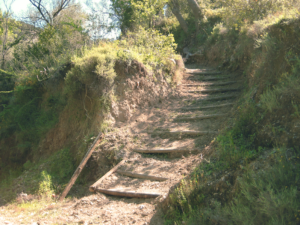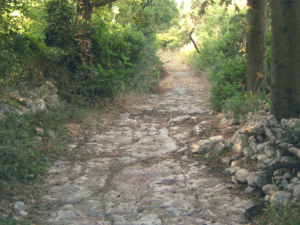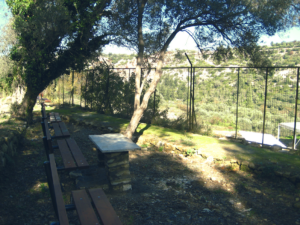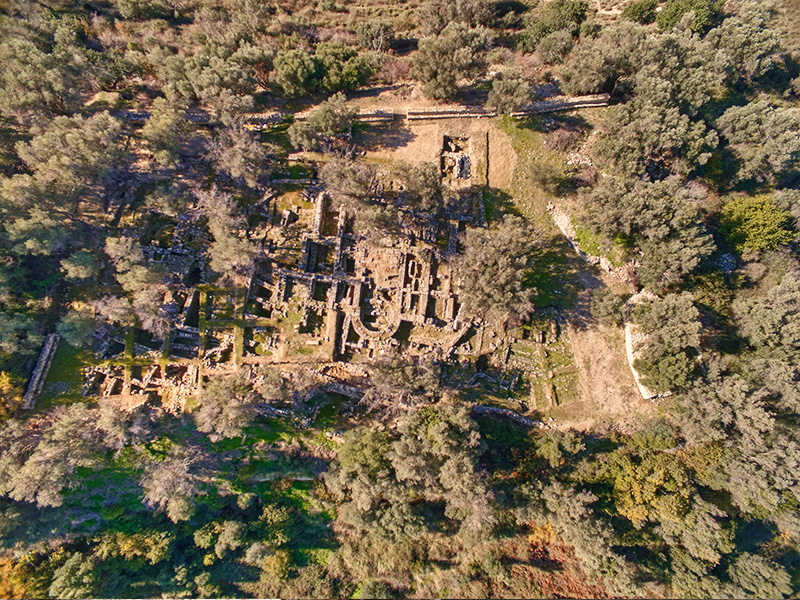
The ancient city’s main nuclei are located on the Prines and Nisi hills, which belong to the modern villages of Archaia Eleutherna and Eleutherna respectively. Hellenistic retaining walls, Roman buildings, and a Christian basilica built over a Hellenistic cemetery were uncovered at the site of Katsivelos on the east foot of Prines hill. Dedicated, according to the dedicatory inscription, to the Archangel Michael, the basilica was built
in AD 420-450 (a later date has also been suggested) and destroyed in the seventh century AD.
Around it were several tile-covered and cist graves of the sixth and
seventh centuries AD. The Roman buildings include three houses, which were destroyed by the powerful earthquake of AD 365 and a bathhouse with two furnaces. A stone-paved street and a large public building, probably of the Hellenistic period (second-first centuries BC), but also used during the Roman period (first-second centuries AD), were also revealed.
An entire city quarter of the Hellenistic period, with several houses and a sanctuary enclosure with a five-column Doric propylon (400 BC) were excavated on Nisi hill, the ancient city’s western hill.
Buildings and other material remains are scattered throughout the area. These include part of a fortification tower (Hellenistic to Byzantine period) atop Pyrgi hill, two vast rock-hewn water cisterns below and west of the tower, a huge limestone quarry at Peristere, cemeteries (primarily Roman) located below the quarry at Langas in the city’s northwest sector, and a stone bridge north of Prines hill.
The excavations at Ancient Eleutherna revealed exceptional finds from different time periods (Sub-Neolithic to Byzantine), including dozens of inscriptions, sculptures, objects made of precious materials, exotic artefacts imported from the East, coins, metal utensils, and glass vases.
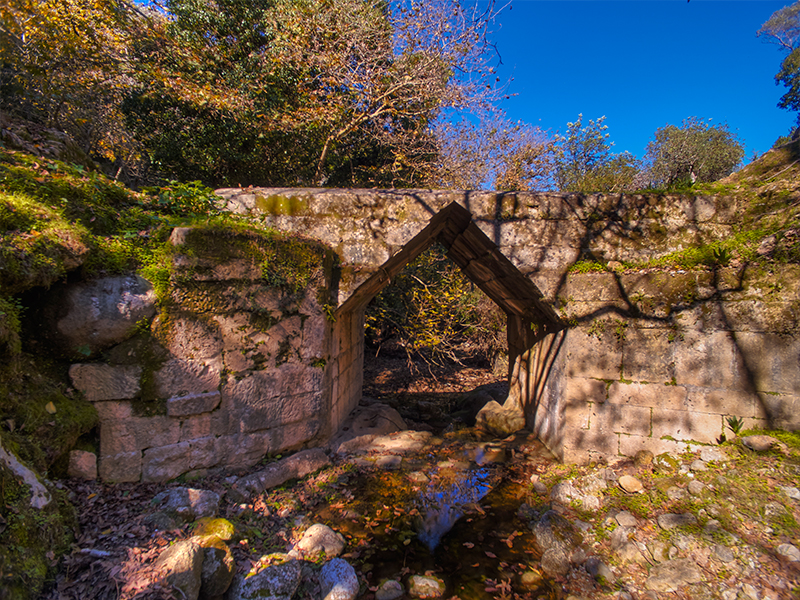
Archaeological Site Management
Eleutherna was recently declared an archaeological site and zoned into areas for complete protection (Zone A) and controlled development (Zone B), so that both the core of the archaeological site and the surrounding area are effectively protected. In fact, the area has been designated a landscape of historic significance and natural beauty since the 1960s, because, in addition to the antiquities, particularly those uncovered by the University of Crete over the past 30 years, which have triggered the interest of the international scientific community, the natural landscape, which coexists with the cultural heritage, also requires protection.
Thus, the 2000s saw the creation of the Eleuthernian Grove, an archaeological park with dirt and stone-paved paths, wooden steps and handrails, rest areas, outdoor sitting areas, and signs in both Greek and English, connecting the excavated areas and other places of interest. There is also a plan to create a unique botanical garden with Cretan plants, where visitors will learn in detail about their therapeutic and aromatic properties and their use from antiquity to the present day.
The archaeological site already features two shelters, the construction of which was funded by the Third National Strategic Reference Framework (NSRF), a curved shelter over the necropolis on the west side of Prines hill and a stepped shelter over the basilica on its eastern side. Moderate restoration was carried out respecting the site’s character both in the necropolis and the ancient city, in order to enable the general public to easily identify and understand the different monuments while preserving the character of the excavation area.
Professor N. Chr. Stampolidis’s vision is to “to deliver to the world what Greek culture is. In addition to history and aesthetics, human measure and the relation of humans to naturemeasure … No virtual tour on the Internet can rival the reality of this place … They will not have seen the sunlight or experienced the aromas of the different seasons.”

